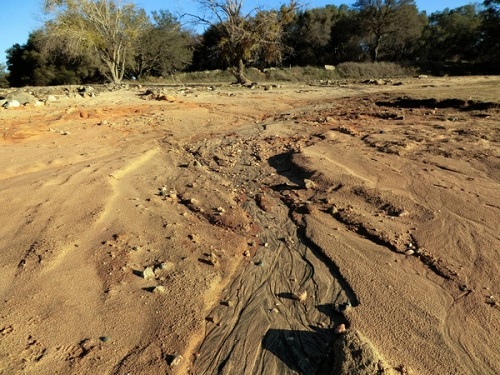
BY EPHREM ANDARGACHEW
Ethiopia is the most populous country in Africa and the economy or the livelihood of the nation is heavily reliant on agriculture with rain-fed, smallholder farming representing more than 90 percent of national agricultural outputs. Nevertheless, the agriculture sector is also a major driver of deforestation and land degradation.
Besides, the pressure to increase agricultural production has resulted in the expansion of agricultural lands, overgrazing, and so on. Along with rapid population growth, associated fuel wood needs, frequent droughts, and deep-rooted poverty, the pressure on Ethiopia’s natural resources is immense. These unchecked agricultural activities, land and forest degradation has posed a critical threat to the land and livelihoods of the nation.
Addis Ababa Plan and Development Commission Office for the City Administration Resilience Project Urban Planning Expert Ephrem Gezahegn told The Ethiopian Herald that proper land management and usages are important to national proper development. It protects the country’s forests and directly or indirectly addresses the preservation and development of forest resources and landscape restoration interventions of the nation.
In addition, the practices of sustainable land management help to have sustainable agriculture, provide important local, regional and global benefits. They also contribute positively to essential ecosystem services such as regulating water cycles, sequestering carbon, and helping to preserve agro biodiversity, he explained.
It is true that sustainable land management incorporates using the land within its capability to ensure the productivity and economic potential of the land that is maintained, while its ecological function, such as the ability of the soils to preserve water or the landscape to maintain biodiversity, is not lessened.
According to Ethiopian Biodiversity Institute Crop and Horticulture Director Wubeshet Teshome, sustainable land management is the method of managing the use and development of land in both urban and rural areas. Because land resources are limited and used for a diversity of purposes which may include organic agriculture, reforestation, water resource management, eco-tourism projects, and so on.
Moreover, sustainable land management increases food and wood production, soil protection, increased fertility, and the nation’s biodiversity. It also enhances the sociocultural benefits namely, strengthening community centers institutions, increasing income, and improving household nutrition. Actual and effective implementation of sustainable land management activities brings social and economic benefits to the country, he added.
Furthermore, sustainable land management improves agro ecosystems, which are needed to address the challenges facing the world today, such as food security and climate change. Hence, the implementation of land management practices will enhance environmental, social, and economic sustainability, he said.
Taking the importance of sustainable land management and factors that affects land in Ethiopia into consideration, various attempts have been made to restore the land. Even the successive government of the country has prepared different Policies, strategies, proclamations, programs, and plans for the restoration of the nation’s land.
Nebere, H.; Tolossa, D.; Bantider A. (2021), in their article entitled “Analyzing Factors Affecting the Sustainability of Land Management Practices in Mecha Woreda, Northwestern Ethiopia” stated that in order to curb the challenges of land degradation, several governmental and non-governmental organizations have been practicing land management measures in Ethiopia.
The key land management measures have been practiced under the food-for-work (FFW) program (1973–2002), managing environmental resources to support a transition to more sustainable livelihoods (MERET, 2003–2015), productive safety net programs (PSNP, 2005–present), community mobilization through free-labor days (1998–present) and the national sustainable land management project (SLMP, 2008–2018).
These applied land management practices, however, are not effective in bringing about the expected alterations. The intervention strategies before the 1990s were more technology-oriented and followed a top-down approach; their impact was inconsequential. Numerous soil and water conservation practices, such as the use of stone terraces, soil bunds, and area closures, which are executed with the funding of external aids and donors, are limited to bring the anticipated results on land resources and the livelihoods of people, they explained.
There were various efforts towards improving land management practices, nonetheless, the problem of land degradation remains a severe defy. This is because land management practices have been held mostly seasonal campaigns, and the measure of success was more in terms of area coverage than the quality of measures to bring about the intended benefits, and this made the practices unsustainable.
The restoration of land for sustainable development is important not only for the rural population but also for urban people. Rehabilitating the land is very important to rural people to conduct their agricultural without natural problems while it benefits the urban population in various ways.
Ethiopian Ministry of Urban Development and Infrastructure Minster W/ro Chaltu Sani in her part noted that improving and modernizing land documented systems is important to increasing urban revenue, and alleviating the problems of good governance. Hence, various projects have been undertaken across the nation.
Since land degradation is a serious challenge for Sub-Saharan African (SSA) countries, it is vital to know the causes of land degradation. Because the causes of land degradation are complex and vary from place to place. But the major drivers of land degradation are generally classified into two: proximate and underlying causes.
The proximate causes are related to natural causes such as biophysical conditions, topographic and climatic conditions, and inappropriate land management practices while the underlying causes are highly associated with anthropogenic, which include population growth, land tenure, and other socioeconomic and policy-related factors.
Cognizant of restoring degraded land for sustainable development in Ethiopia, currently, the Ministry of Agriculture is doing various activities. According to the Ministry, Ethiopia is known for its historic Agriculture but also for the associated widespread and ongoing land degradation.
From the Ministry of Agriculture, Dr. Kaba Urgessa said that the rapid population growth, deforestation, free grazing, absence of clear land-use policy are a few causes for land degradation in Ethiopia.
So, restoring degraded land offers multiple benefits at local, national, and global levels which include climate change mitigation, revising biodiversity loss, and providing socio-economic benefits to the local communities, he added.
Soil erosion is the most visible indicator of land degradation occurring in various parts of Ethiopia. Therefore, planting three seedlings which is appropriate for tree-based restoration should be promoted. This will reduce the nation’s vulnerability to the impacts of climate change. This is important to mitigate climate change problems such as the raising of temperature, rainfall variability, soil erosion, flooding, landslides, and so on, he noted.
For this, the government activities to restore millions of hectares of degraded land through conservation of indigenous habitat to the promotion of agroforestry systems, natural forest regrowth, agricultural systems, and establishment of tree plantations should be supported by all stakeholders and concerning bodies.
The Ethiopian Herald November 21/2021




